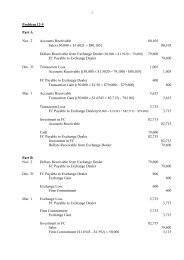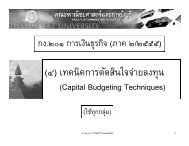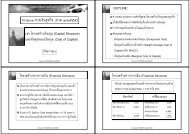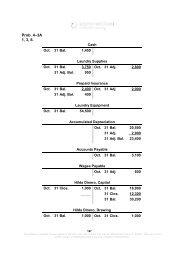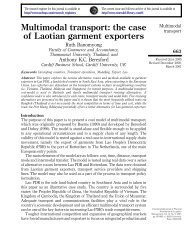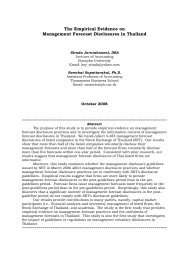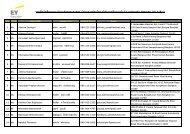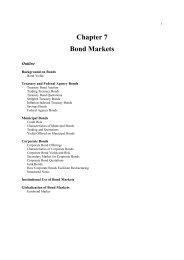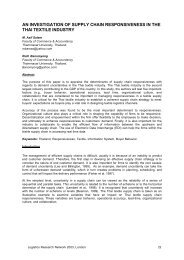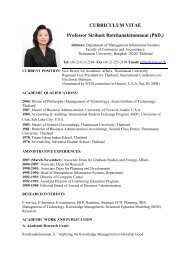Human capital and performance: A literature review
Human capital and performance: A literature review
Human capital and performance: A literature review
Create successful ePaper yourself
Turn your PDF publications into a flip-book with our unique Google optimized e-Paper software.
human resources) is the idea that practices within it are interrelated <strong>and</strong> internally consistent,<br />
<strong>and</strong> that ‘more is better’ with respect to the impact on <strong>performance</strong>, because of the<br />
overlapping <strong>and</strong> mutually reinforcing effect of multiple practices’ (1995: 201).<br />
With the configurational approach, ‘the distinction between best practice <strong>and</strong> contingency<br />
models begins to blur’ (Becker & Gerhart, 1996: 788). The configurational idea is that there<br />
will be an effective combination of HR practices suited to different organisational strategies.<br />
Huselid & Becker (1995) <strong>and</strong> Delery & Doty (1996) literally give support for the<br />
configurational approach in their respective studies.<br />
In summary, while some authors argue for the idea of external <strong>and</strong> internal fit, others st<strong>and</strong> for<br />
an identifiable set of best practices for managing employees that have universal additive<br />
positive effects on organisational <strong>performance</strong>. Some (e.g., Youndt et al., 1996) maintain that<br />
the two approaches are in fact complementary. The argument that these approaches are on the<br />
same spectrum has also been made by Becker & Gerhart (1996) <strong>and</strong> Guest et al. (2000). As<br />
Becker & Gerhart (1996) state that the best practices of HR have an architectural nature, that<br />
is, for example, the idea of incentives for high <strong>performance</strong> has a generalisable quality. But<br />
within a particular firm, HR practices <strong>and</strong> their mix will be different, depending on the<br />
context <strong>and</strong> strategy <strong>and</strong> so forth. ‘Two companies with dramatically different HR practices<br />
arguably have quite similar HR architectures (Lepak & Snell, 1999). For example, although<br />
the specific design <strong>and</strong> implementation of their pay <strong>and</strong> selection policies are different, the<br />
similarity is that both link pay to desired behaviours <strong>and</strong> <strong>performance</strong> outcomes <strong>and</strong> both<br />
effectively select <strong>and</strong> retain people who fit their cultures’ (1996: 786). Or, as Guest et al. put<br />
it: ‘the idea of ‘best practices’ might be more appropriate for identifying the principles<br />
underlying the choice of practices, as opposed to the practices themselves’ (2000: 3).<br />
HR practices for developing human <strong>capital</strong> <strong>and</strong> <strong>performance</strong><br />
The high <strong>performance</strong> management, or high <strong>performance</strong> work practices, has become an<br />
important field. A number of the scholars have studied the depth <strong>and</strong> breadth of the HR<br />
practices, particularly in association with <strong>performance</strong> (see Table 2). High commitment<br />
management aims to go beyond high <strong>performance</strong> management to include an ideological<br />
component - the identification of the employee with the goals <strong>and</strong> values of the firm, so<br />
<strong>Human</strong> <strong>capital</strong> <strong>and</strong> <strong>performance</strong> 13



